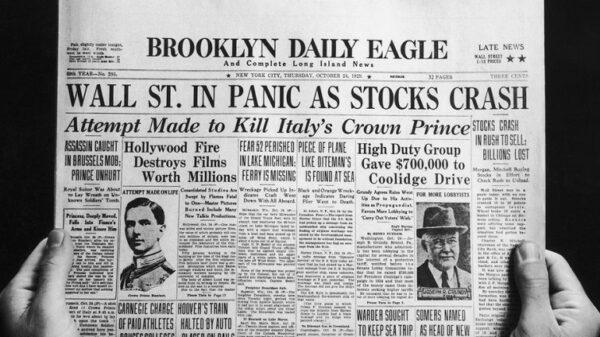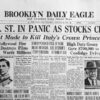Mark Spitznagel of Universa, known for profiting from market downturns, foresees a significant financial crisis looming. Wall Street pays close attention whenever Mark Spitznagel voices his predictions.
The first reason is that since the inception of the tail risk hedge fund Universa Investments in 2008, it has achieved remarkable returns, such as earning a profit of €1 billion in a single day, as reported by the Wall Street Journal.
Tail risk is a type of portfolio risk that arises when the likelihood of an investment moving more than three standard deviations from the mean is higher than what a normal distribution would suggest. Tail risks encompass events that are highly improbable and occur at the extremes of the normal distribution curve.
This brings us to the second reason the market heeds its advice. Spitznagel has consistently eschewed any reliance on short-term perspectives to generate profits.
The complex strategy
The mysterious quant, a disciple of “Black Swan” author Nassim Nicholas Taleb, consistently loses money through a complex strategy that only yields returns during highly volatile periods. Significant downturns, such as the 2008 financial crisis, the 2015 Flash Crash, and the market downturn triggered by the pandemic in 2020, were sufficient for an investor with a minor stake in his mutual fund to surpass an investor with a traditional 90/10 stocks-to-bonds ratio.
His forecast is rather bleak, predicting a substantial sell-off in the stock market with the potential for stocks to lose over half their value. Nonetheless, accurately predicting when the market will plummet is considered by many to be much more challenging, if not impossible, than safeguarding a portfolio against such a downturn. Similarly, while fund managers and strategic advisors often maintain an optimistic front, dire warnings can seem like astute marketing tactics for someone offering insurance against extreme market risks.
“I believe we’re heading towards something truly dire,” Spitznangel quipped during an interview this week, “you’d expect someone to say that.”
He anticipates the rally will persist for months and intensify. This is attributed to the market being in a “Goldilocks phase,” where easing inflation and the Fed’s monetary easing encourage predictions of continued growth. However, he noted that rate cuts frequently precipitate significant market disruptions. Contrarily, the continued caution among some investors signals a divergent view. “Making a case for a downturn doesn’t make one seem foolish,” he remarks.
Memories of the dot-com boom era
In May, Morgan Stanley’s strategic advisor, Mike Wilson, became optimistic about the market shortly after he was no longer part of the firm’s global investment committee. More recently, JPMorgan’s Marko Kolanovic, who maintained his negative stance during the AI-driven market rally, was let go. Fund managers who did not invest in AI-driven stocks like Nvidia are now facing losses.
This situation mirrors the dot-com boom: In late 1999, just months before the S&P 500 reached its peak, Merrill Lynch’s strategist Charles Clough, a pessimist regarding market direction, departed from the firm. (Editorial note: ‘Bull’ refers to someone who is optimistic about market growth, while ‘bear’ refers to someone who expects the market to decline).
A huge time bomb ready to explode
Spitznagel predicts a more severe upheaval than what was seen a quarter of a century ago, dubbing it “the biggest bubble in human history” due to the extreme excesses. The high public debt and valuations present challenges for bailouts under Washington’s leadership. He believes the current mild slowdown in inflation is deceptive and anticipates that the U.S. economy will enter a recession.
He employs the term “Mega-Tinderbox-Timebomb” to describe the precarious macroeconomic conditions. The analogy he draws is quite nuanced: Governments have been so diligent in extinguishing any economic flare-ups that the accumulation of debt and other concealed risks have amassed the components for a significant conflagration.
“Cassandras are formidable investors”
How should ordinary people without access to tail risk hedging respond to such predictions? Likely by doing nothing, he suggests. The Cassandras are indeed formidable investors.
Staying passively invested in stocks is the optimal long-term strategy, according to him. The primary role of the protection sold by Universa is to allow professional fund managers to comfortably take risks, providing them with additional capital when opportunities present themselves. Private investors, who don’t face client withdrawals in a downturn, can benefit from consistent contributions to an index fund, even amidst alarming headlines.
Over time, they are likely to outperform wealthy investors who opt for structured products designed to reduce market volatility. His rationale? One reason is that these products’ components, like put-spread collars, are derivatives that Universa purchases for its fund. The sustained resistance this creates to the returns of buyers is considered beneficial.
“We prefer men with cut-spread collars,” he states. “It was never a favorable deal.”

















